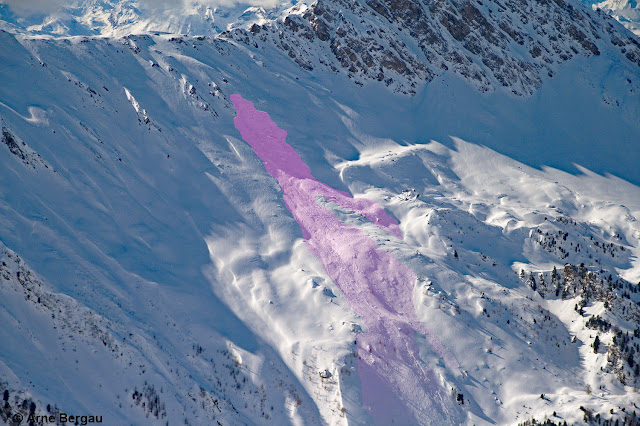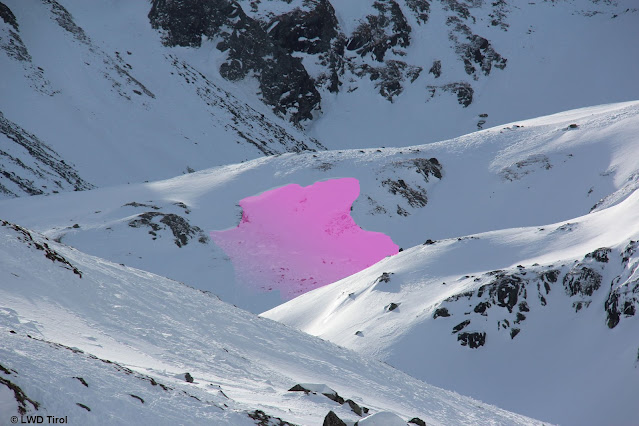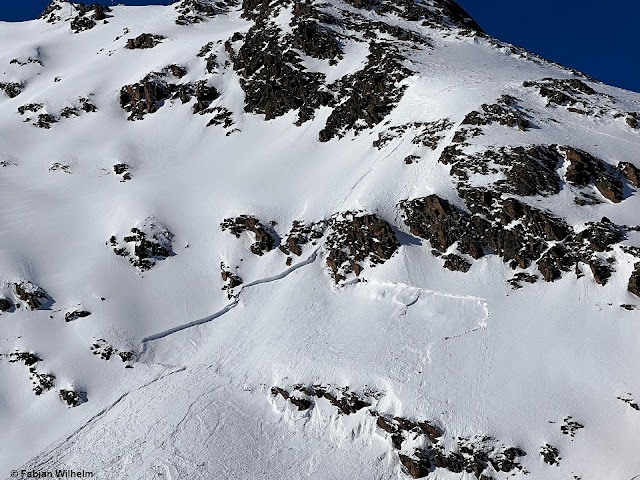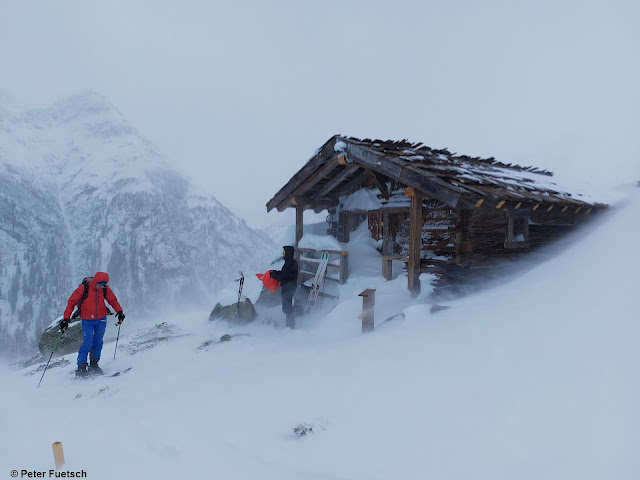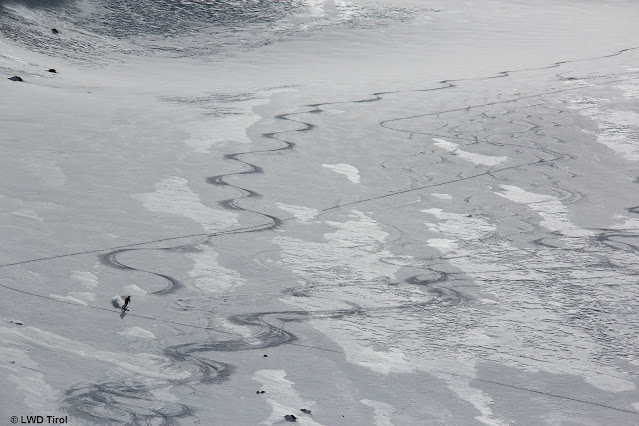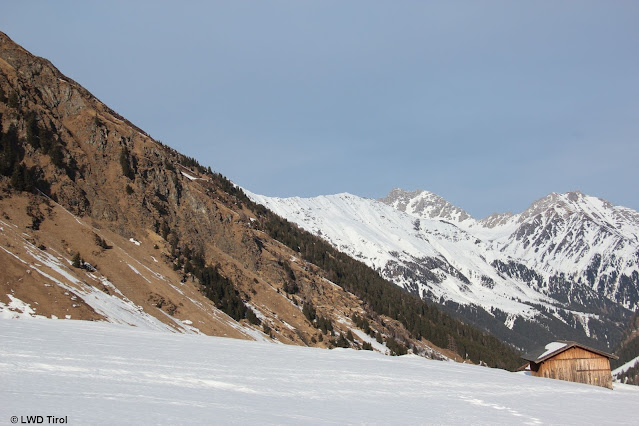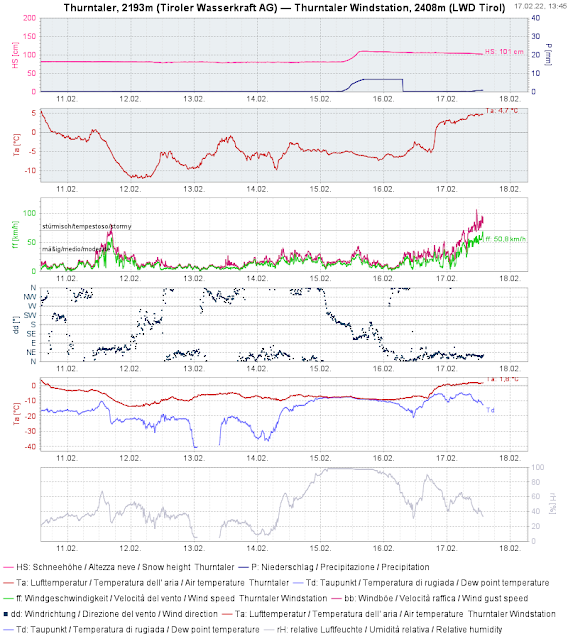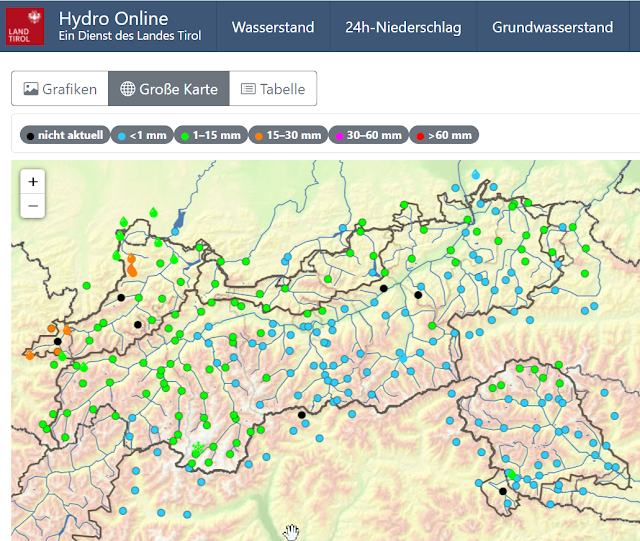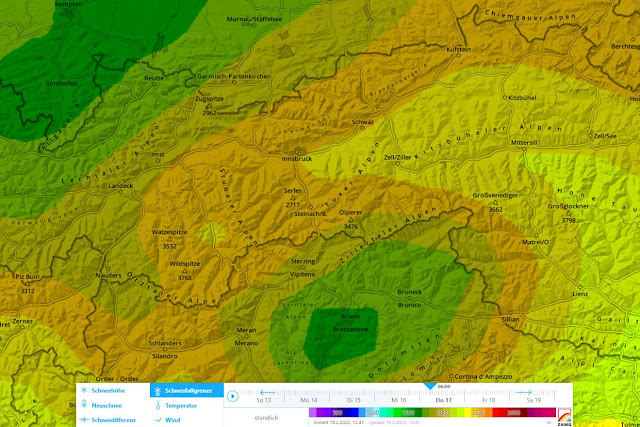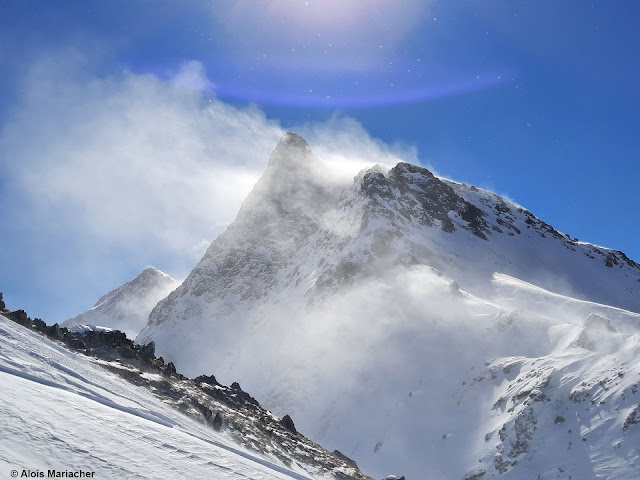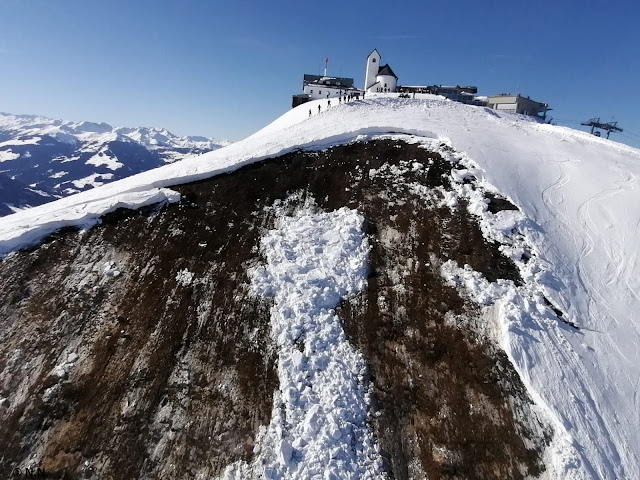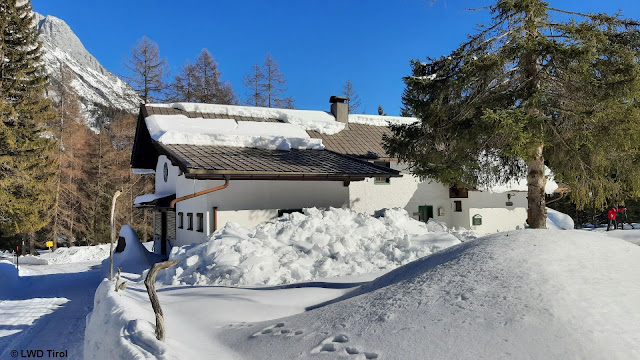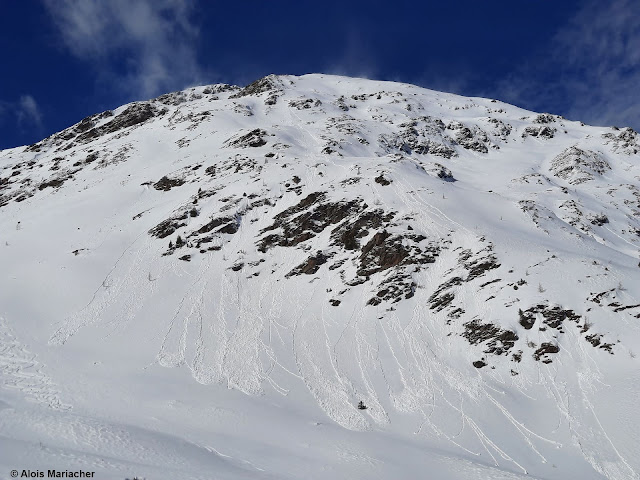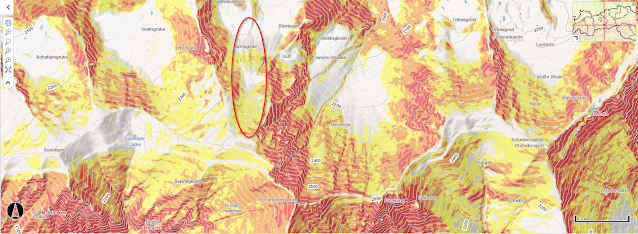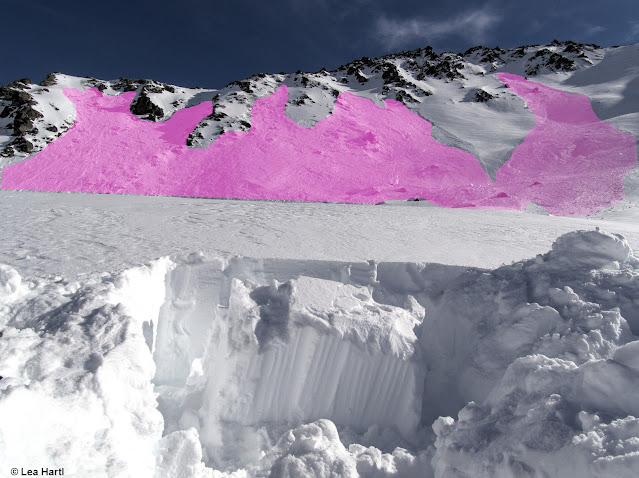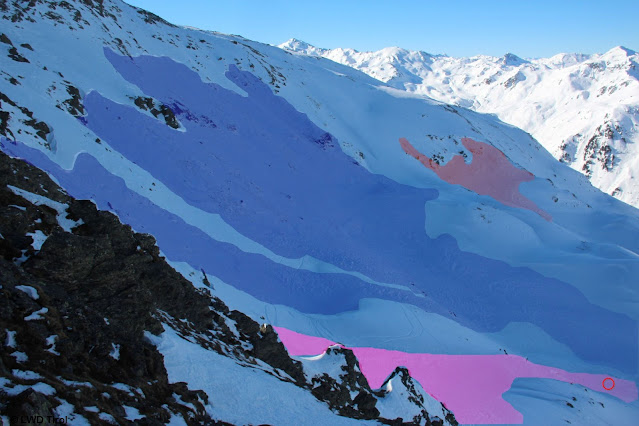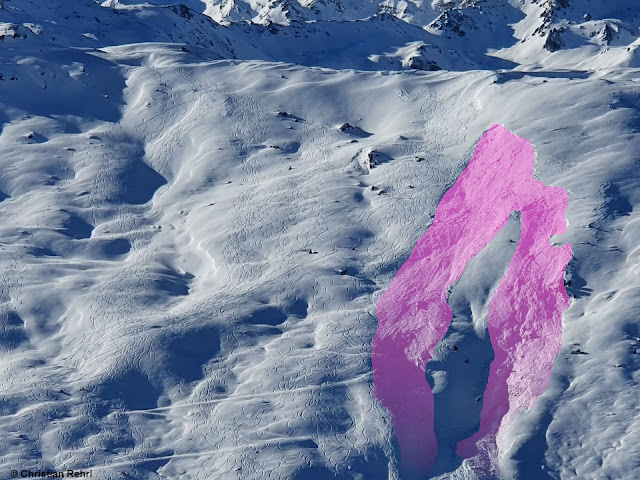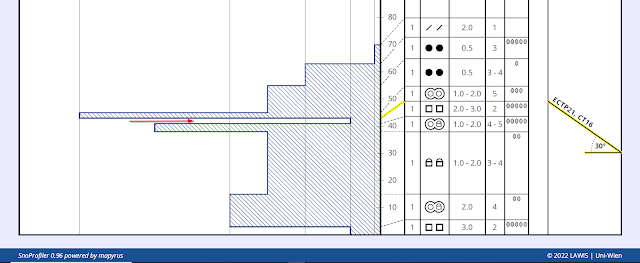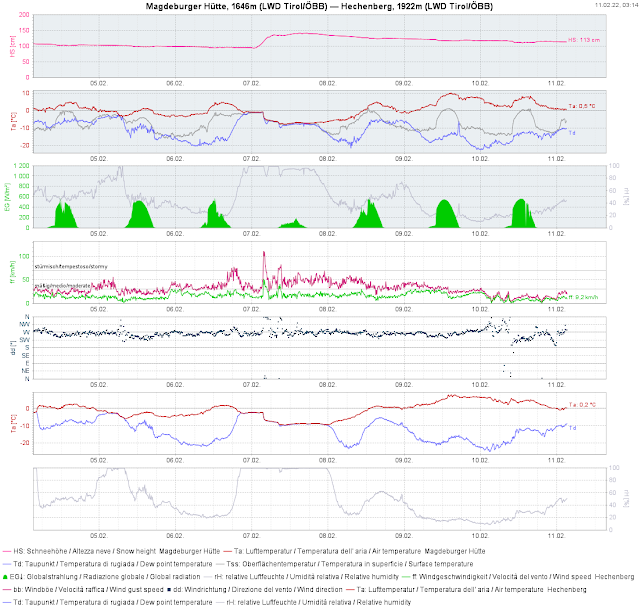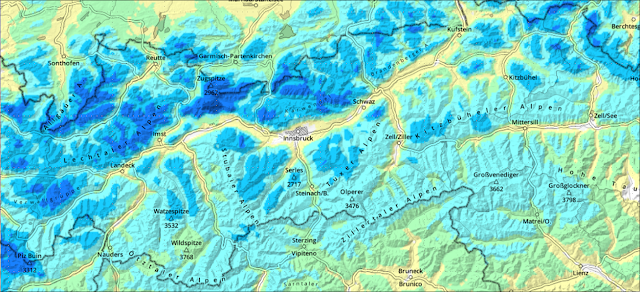Avalanche accident Schafseitenspitze, 13.02.2022
Today, 14.02.2022, together with the Alpine Police we were below the Schafseitenspitz in the western Tux Alps in order to carry out orderly accident analysis.
 |
| Support from the State Helicopter (photo: 14.02.2022) |
Course of accident
At the time of the accident there was one person on the summit of the Schafseitenspitze, a group of 6 persons on a ridge towards the summit and one sole backcountry tourer at some distance from the group of 6 in the steep part of the slope. The group of 6 heard a whumpf noise on the ridge and noted a slab trigger nearby. The sole skier was swept along by the snow masses and utterly buried. He was quickly pinpointed by those who were untouched by the avalanche and unburied, but needed to be reanimated. The crew from the emergency medical helicopter continued reanimation efforts and flew him to the Innsbruck Clinic.
 |
| Overview of accident avalanche. Arrow points to ascent direction of the backcountry tourers. While the group of 6 was on the ridge, the lone skier was still in the slope (near the ridge). The ellipse indicates the point of burial. Shaded in violet: secondary avalanches which triggered by fracture propagation in the pronounced weak layer immediately after the primary avalanche. (photo: 14.02.2022) |
Snowpack analysis
Our snowpack analysis resulted in the following picture: beneath fresh snow and snowdrifts from 31.01.2022 was a crust sandwich, i.e. two melt-freeze crusts between which was a loose-snow, faceted-crystal weak layer. This weak layer must have been constant and extensive over great distances, since only that way can the magnitude of the slab and the secondary avalanches be explained.
 |
| Snow profile near the flat ridge extending toward the summit. Arrow shows the relevant weak layer. In background, part of the avalanche fracture. (photo: 14.02.2022) |
 |
| Profile from above location: red arrow points to weak layer surrounded by a thin melt-freeze crust and a thin ice film. Medium loading was necessary to trigger the weak layer. The fracture propagated over the entire block. North, 20°, 2420m. |
 |
| View of plummet path towards the ridge. Visible: noticeably decreasing fracture depth of the slab from right to left. (photo: 14.02.2022) |
Avalanche magnitude
This avalanche was a very large-sized slab avalanche, overall length 1050m, width 450m. The fracture depth lay mostly between 60 and 100cm with corresponding divergencies above and below. The avalanche triggered on a 40° steep north-facing slope. The buried person lay slightly more than a metre deep.
 |
| Spot of burial in foreground with avalanche fracture far in background. (photo: 14.02.2022) |
Other thoughts about current persistent weak layer
In analyzing the numerous avalanche incidents, the following rough picture results. Most of the avalanches triggered at an altitude band between 2150 and 2600m in W/N/E aspects. Whereas 10 days ago the avalanches triggered mostly at lower altitudes, including below the treeline, the altitude band tended to ascend (currently at 2300-2600m).
In the Stubai Alps, by comparison, we observed increasingly frequent avalanches at altitudes between 2600m and just under 3000m on north-facing slopes. This is due to the comparatively small amounts of fresh fallen snow which led to increased expansive metamorphosis in wind-protected shady terrain at the end of January.
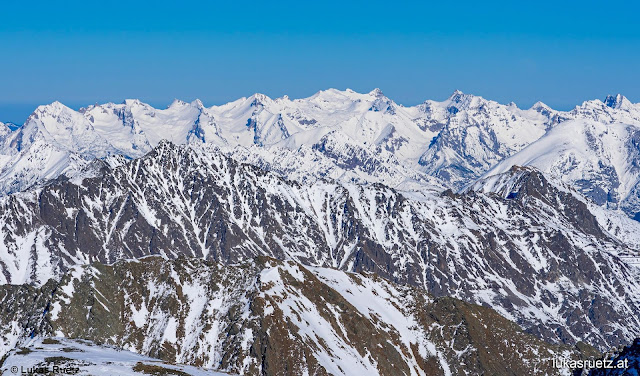 |
| View from Stubai Alps to the Northern Alps with much more snow (photo: 13.02.2022) |
In addition, particularly in less frequented zones there are still whumpf noises and fractures in the surface. Avalanches are triggerable mostly in zones where the snow is shallow and in transitions from shallow to deep snow. They can still grow to large, sometimes to very large size....
 |
| Avalanche Jochgrubenkopf on 11.02.2022. No one was injured. (photo: 14.02.2022) |
 |
| Naturally triggered avalanches on Medrig (freeriding terrain of See in Paznauntal Ski Area). Compare with photo from this Blog) (photo: 12.02.2022) |
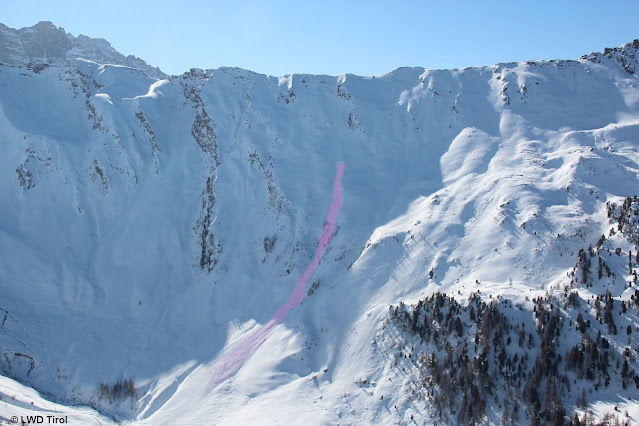 |
| Avalanche from 13.02.2022 Hohe Warte in Wildlahnertal in northern Zillertal Alps. One person skied into the slope from the ridge above. Nothing happened. (photo: 14.02.2022) |
 |
| Slab avalanache Seblasspitze, northern Stubai Alps, 13.02.2022. No injuries. (photo: 14.02.2022) |
Also good things to report...
The avalanche situation in East Tirol is generally much more favorable. The persistent weak layer there is less pronounced. Caution is most necessary on north-facing slopes in very steep terrain in transitions from shallow to deep snow and in ridgeline terrain in all aspects at high altitudes.
It is also more favorable (as it has been all winter long) in terrain which is highly frequented by freeriders.
And on south-facing slopes, at least at intermediate altitude, you’ll find a quite stable snowpack with the pleasures of corn snow.
 |
| Corn snow on the descent in Glockner region (photo: 14.02.2022) |
It is getting turbulent again...
The weather is changing. Conditions are becoming highly variable: cold, warm, rain, storm. A little bit of everything. We will report again next Thursday, 17.02.2022 at latest.

